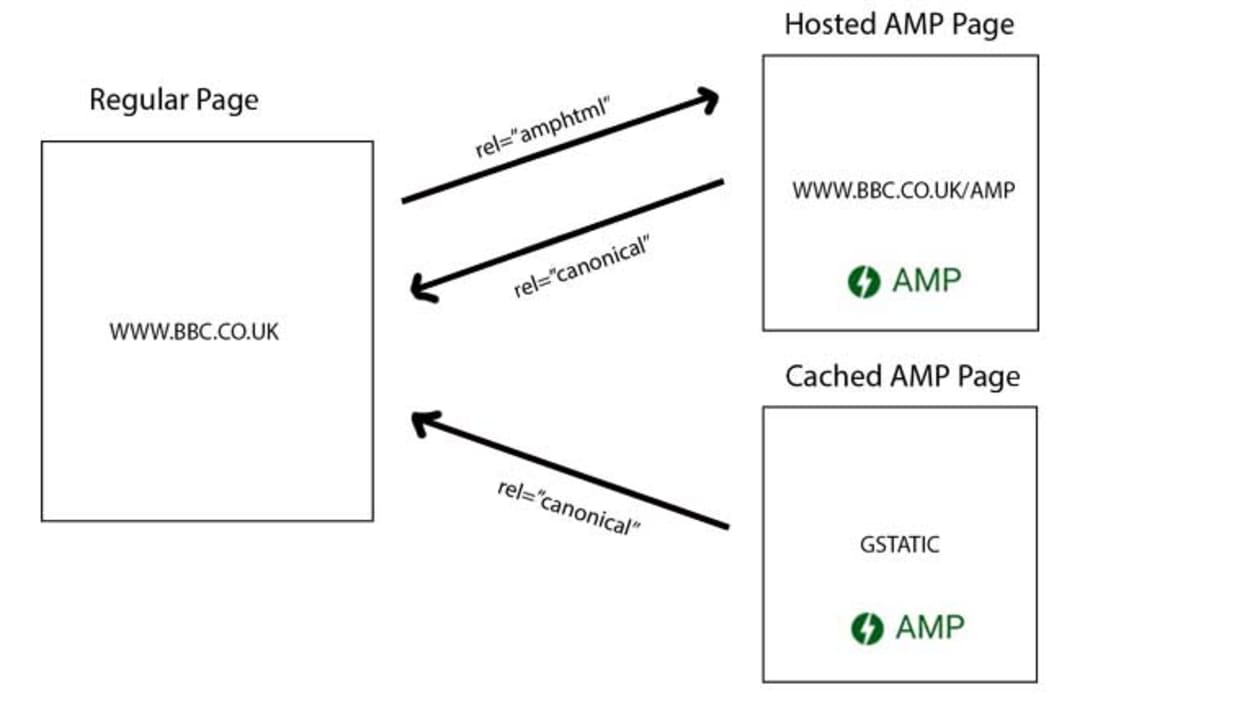In October 2015, Google announced a new open-source initiative called Accelerated Mobile Pages (AMP). As of Wednesday, these new AMP pages have gone live and are now appearing in the SERPs. The rollout seems gradual, so it may take a little time to show globally.
AMP pages work, by creating a version of the page that is highly optimized, and adhering to stringent coding standards. The idea is that the whole page is optimized just for speed. The following is a very brief summary:
- AMP HTML - The template of your AMP page is essentially standard HTML with some custom AMP properties. This means some standard HTML Tags are replaced with AMP-specific tags (i.e. “amp-img”). You will also need to use a streamlined version of CSS
- AMP JS - AMP pages use their own AMP JS Library, which implements all the best practices of AMP to ensure a fast rendering of the page. One of the major features is that all third party resources are loaded asynchronously so as not to prevent the rest of the page from being loaded while that resource is loading. Custom JavaScript is essentially prohibited.
- Cached AMP Pages - Where AMP coding standards are implemented correctly, Google will take a copy of the AMP page and cache it at multiple locations around the world. This means the page renders extremely quickly for all users, no matter where they are based.
You will find a more detailed technical summary of AMP coding requirements here.
How to Make your AMP Page Appear in the SERPs
For AMP pages to be visible to Google, apart from creating an AMP version of your page, you need to add the following code to the regular page:
rel = "amphtml"This indicates to Google that there is an AMP version of the page that can be served to its mobile users. To prevent duplicate content being indexed in the SERPs, you must place a rel=“canonical” tag on the AMP version on the page to indicate that the Regular page is the one to be indexed. You can see how this is implemented in the diagram below:

We expect to see many Content Management Systems roll out plugins or integrated support for AMP in the near future that will take care of much of the technical aspects. For example, it is worth checking out the WordPress Plugin AMP, which was created by Automattic (the team behind WordPress.com).
AMP Pages in Google Search
In addition to speed related benefits, if correctly implemented you can gain additional visibility in Google via the use of the AMP lightening bolt, and the new AMP Carousel. You can see examples of these below (images via Twitter):


The current rollout is targeting “News Articles,” so you will need to ensure that your pages are correctly marked up with the News Schema. However, the intention is " for all published content, from news stories to videos and from blogs to photographs and GIFs, to work using Accelerated Mobile Pages “.
We can see the scope of AMP increasing significantly throughout 2016 as more features and functionality is added (i.e., better ad coverage \ analytics support), and more and more publishers implement it. With mobile usage continually increasing, and the new AMP News carousel reserved for publishers who have implemented Accelerated Mobile Pages, it will become a necessity.
